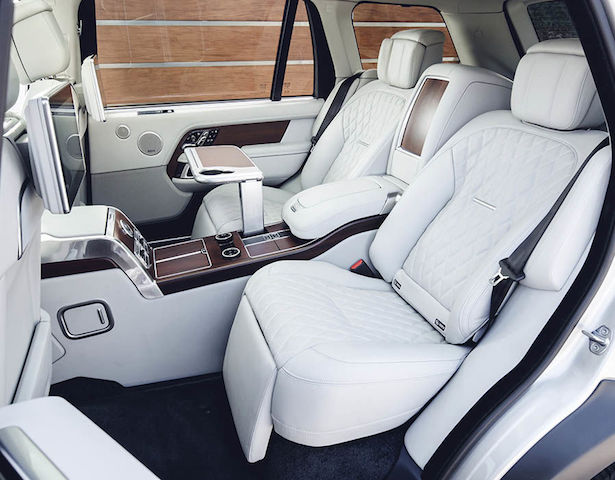
The people at Land Rover NZ say they will announce the price of the luxury Range Rover SVAutobiography in the New Year – after they convert the factory starting price in England to NZ dollars.
As a guide, the range in England retails between £131,000 and £165,000. At today’s conversion rate of 51 pence to the dollar, that’s NZ$256,000-NZ$323,000.
Five SVAutobiography models will be available to NZ from the middle of next year, both in short or long wheelbase (LWD) configuration. The LWD badges come with airline-type rear seats with 1.2m of legroom.
Powertrains include a plug-in petrol-electric hybrid (PHEV) with a turbocharged 2.0-litre four-cylinder engine and an electric-only range of 50km. It’s called the Si4 P400e.
Others are the entry-level 3.0-litre diesel TDV6, 4.4-litre diesel SDV8, 3.0-litre petrol V6S, and 5.0-litre petrol V8S. The V6S and V8S are supercharged. Gearboxes are eight-speed ZF units.
Power and torque are as follows:
TDV6 190kW/600Nm
SDV8 250kW/740Nm
Si4 298kW/640Nm
V6S 280kW/450Nm
V8S 415kW/700Nm.
Land Rover NZ hasn’t exactly identified the LWD models, although British references point to three out of the five. And the SVAutobiography is all about LWD, as the accompanying pictures show.
Range Rover says the rear cabin offers a peerless passenger experience. The seats have 22-way adjustment and can decline 40deg; there’s a massage function, heated calf and foot rests; electrically operated rear tables; two 10-inch entertainment screens with 4G WiFi connectivity; a concealed refrigerator between the two seats; rear doors that close with the touch of a button.
The SVAutobiography range is built by Jaguar Land Rover’s (JLR) Special Vehicle Operations (SVO) centre and was unveiled at the Los Angeles motor show, where much interest was centered on the plug-in Si4 P400e.
Lynfel Owen, the senior manager for JLR’s PHEV models, told reporters at Los Angeles there were big advantages going with the Si4’s 2.0-litre petrol engine instead of the 2.0-litre diesel from the Jaguar XE.
“Four-cylinder turbocharged gas (petrol) engines are excellent at delivering refined performance at low speed,” he said. “And you get the benefits of turbocharging when you work that engine harder too.
“So, the gas four-cylinder gives you that duality of performance. And that really complements a PHEV powertrain.
“The maximum torque of a diesel is at very low revs. But with a turbo gas engine, combined with the electric drive, we have a wider spread of torque. That combination of factors made it the right choice.”
The Si4’s battery pack sits in an aluminium casting under the cargo floor and is a collaboration with South Korean company Samsung. The battery can be quick-charged in 2h 45m.
Said Owen: “For each market, we have a partner with one of the major charging suppliers who will talk to the customers in parallel about whether they’d like to have a home installation or any other options. The vehicle has a 7kW on-board charger so it’s capable of any supply.
“We want to show how capable this Range Rover PHEV is with electric drive in low range. I think it’s a really important step to say to people, you know you can do all the stuff you want to do in low range, in EV.
“That’s the message we want to get out now, this is really the first one. No one else has done a PHEV with low range. I’m a huge believer that you can enhance the off-road performance with electrification.”




